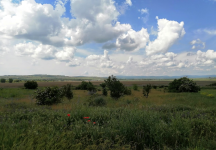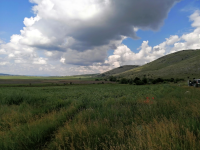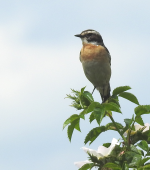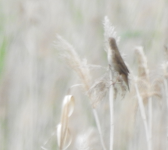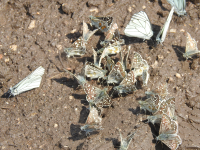John Cantelo
Well-known member
Day 13 - Saturday 10th June
My last full day birding in Bulgaria.
Our first stop today was about 20 km north of Sandanski where the railway line crosses just beyond Dolna Gradeshnitsa. A track here took us up to a small sandpit with a thriving Bee-eater colony, but the target was Rock Sparrow – a very scarce bird in Bulgaria (a ‘write-in’ on my list and a lifer for Victor). After a short wait, we had excellent views of the sparrow plus Golden Oriole, Eastern Olivaceous & Sardinian Warblers, Black-headed Bunting and Black-eared Wheatear.
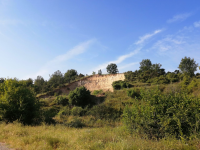
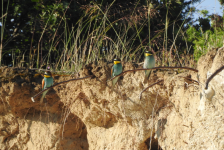

The cliffs above Ilindentsi on a minor road to Ploski (about 10 km south from the previous stop) were another site for Rock Nuthatch. The scenery was very attractive, and the cliffs certainly looked the part. Here we found were Eastern Black-eared Wheatear, Eastern Olivaceous Warbler, Hoopoe, Calandra Lark, Crag Martin, Alpine Swift, etc. Unfortunately, our bad luck with Sittidae had returned and we didn't find the elusive nuthatch .... or was it just that this time we didn’t have a saint on our side? That said it was another of those sites where it would have been great to spend the whole day.
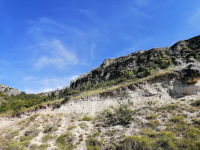
Happily, although the birds didn't quite perform as hoped there were other attractions here. Checking a shady water trough near the road produced another Fire Salamander and a Yellow-bellied Toad (another ‘herp’ lifer).
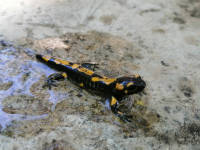
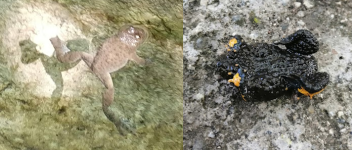
Back in Sandanski another siesta beckoned so I treated myself with a stroll along the town’s attractive tree-lined boulevards, through a pleasant park and then around a small archaeological museum celebrating the town’s Roman remains.
For our late afternoon/early evening birding, we returned to Rupite only this time Dimitar with a clearer plan of action; we’d drive down to the railway bridge and scan for raptors. It wasn’t long before I spotted a Buzzard being mobbed by an Eleonora’s Falcon. Dimitar quickly located another nine Eleonora’s Falcons roosting in a dead tree nearby. The birds showed the full range of plumage types from dark slate-grey birds to much paler Hobby-like individuals. The latter provided a welcome confirmation as to the bird I’d seen previously. The phenomenon of pre-breeding Eleonora’s Falcons gathering inland before heading for their coastal breeding colonies has been known for some years and at this site (where up to 20 birds gather) for about a decade. Beautiful, elegant falcons! Kestrel and Short-toed Eagle were also present. Frustratingly, I saw distant buteo-like birds high over the cliff several times but never well enough to know if they could have been Long-legged). Then it was back to Sandanski for our last evening meal together.
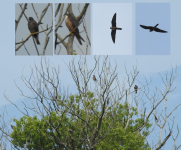
My last full day birding in Bulgaria.
Our first stop today was about 20 km north of Sandanski where the railway line crosses just beyond Dolna Gradeshnitsa. A track here took us up to a small sandpit with a thriving Bee-eater colony, but the target was Rock Sparrow – a very scarce bird in Bulgaria (a ‘write-in’ on my list and a lifer for Victor). After a short wait, we had excellent views of the sparrow plus Golden Oriole, Eastern Olivaceous & Sardinian Warblers, Black-headed Bunting and Black-eared Wheatear.



The cliffs above Ilindentsi on a minor road to Ploski (about 10 km south from the previous stop) were another site for Rock Nuthatch. The scenery was very attractive, and the cliffs certainly looked the part. Here we found were Eastern Black-eared Wheatear, Eastern Olivaceous Warbler, Hoopoe, Calandra Lark, Crag Martin, Alpine Swift, etc. Unfortunately, our bad luck with Sittidae had returned and we didn't find the elusive nuthatch .... or was it just that this time we didn’t have a saint on our side? That said it was another of those sites where it would have been great to spend the whole day.

Happily, although the birds didn't quite perform as hoped there were other attractions here. Checking a shady water trough near the road produced another Fire Salamander and a Yellow-bellied Toad (another ‘herp’ lifer).


Back in Sandanski another siesta beckoned so I treated myself with a stroll along the town’s attractive tree-lined boulevards, through a pleasant park and then around a small archaeological museum celebrating the town’s Roman remains.
For our late afternoon/early evening birding, we returned to Rupite only this time Dimitar with a clearer plan of action; we’d drive down to the railway bridge and scan for raptors. It wasn’t long before I spotted a Buzzard being mobbed by an Eleonora’s Falcon. Dimitar quickly located another nine Eleonora’s Falcons roosting in a dead tree nearby. The birds showed the full range of plumage types from dark slate-grey birds to much paler Hobby-like individuals. The latter provided a welcome confirmation as to the bird I’d seen previously. The phenomenon of pre-breeding Eleonora’s Falcons gathering inland before heading for their coastal breeding colonies has been known for some years and at this site (where up to 20 birds gather) for about a decade. Beautiful, elegant falcons! Kestrel and Short-toed Eagle were also present. Frustratingly, I saw distant buteo-like birds high over the cliff several times but never well enough to know if they could have been Long-legged). Then it was back to Sandanski for our last evening meal together.





